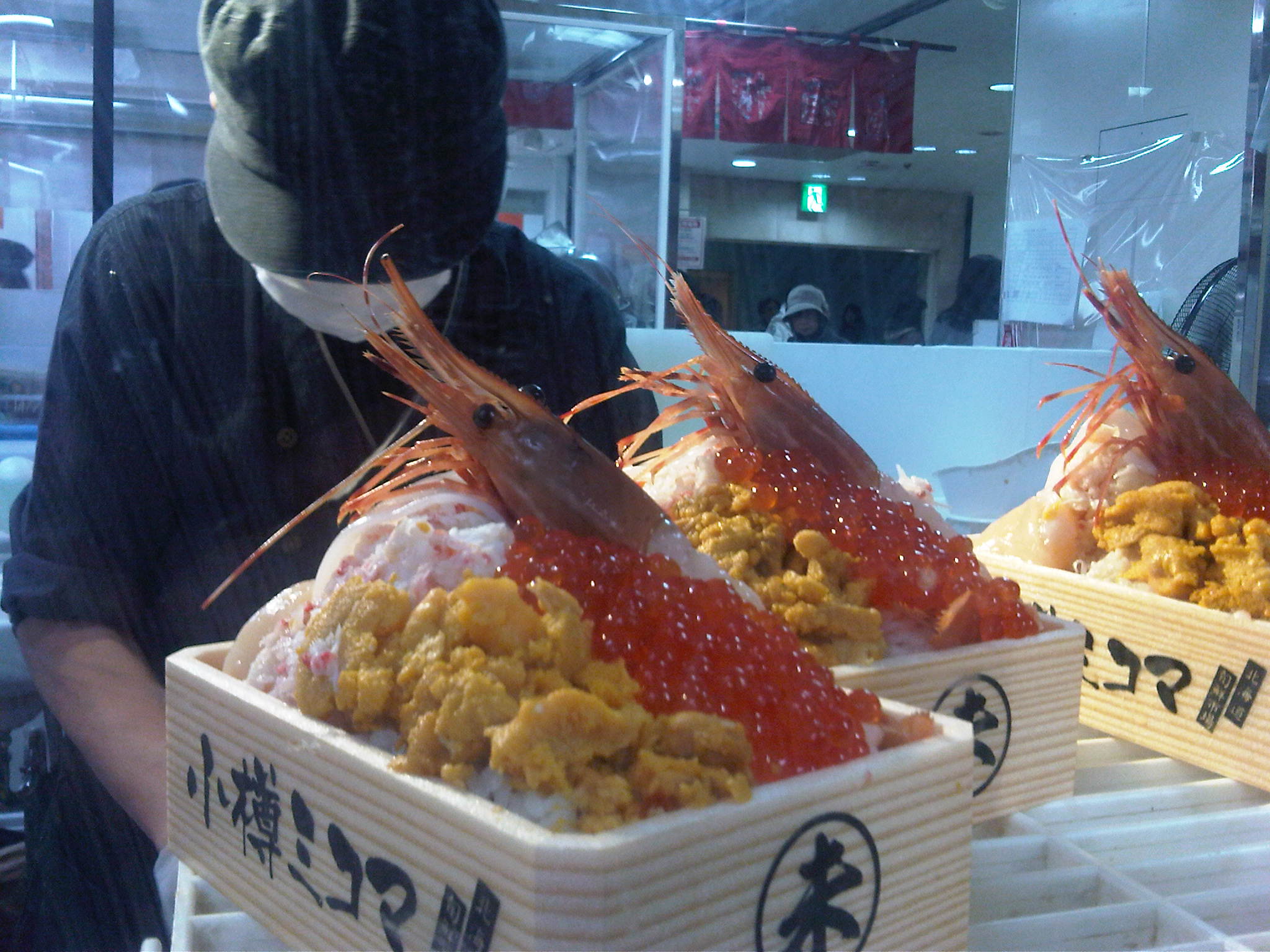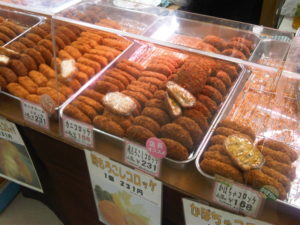
Department stores are one of the most popular tourist attractions in Japan. With their kind and polite service and amenities, you can enjoy one-stop shopping from clothing to home goods to food. But you might not be interested in buying products of Burberry’s or Louis Vuitton’s in Tokyo because they are anywhere in the world. For those who want new local experiences, department stores still offer a place to visit: a food and product fair of Hokkaido on the event floor.
It was held at Odakyu Department Store in Shinjuku, the No.1 area tourists visit in Tokyo, between January 23rd and 29th. Japanese department stores play host to cultural events, such as local food and traditional products exhibitions. This is not only a good attraction for department stores, making millions of money during the period; it is also a great advertising opportunity for local companies as they can meet hundreds of foodies.
Hokkaido is the most popular exhibition that Japanese department stores held. Hokkaido is located at the north end of Japan. With large farm land and three surrounding seas (Japan, Okhotsk and Pacific Ocean), agriculture and fishery are its important industries along with the service sector, especially tourism. Its agriculture produced a more than 1 trillion yen profit in 2009, which accounted for 12% of the national product of agriculture. It produces potatoes and milk the most in Japan, both of which are its trademark. Salmon, scallops, crabs and sea urchin eggs are also its major products. Japanese people call Hokkaido Japan’s food base.

The Hokkaido fair is always crowded. Remember!
The food and production fair of Hokkaido stimulated visitors’ five senses. They could see, smell, touch and taste various foods. Staff greeted energetically, letting customers try their products generously; and people cheered. Crowds gathered and waited for special dishes or cakes in lines. In short, all of them were hungry.
There was a long queue in front of Mikoma. They wanted to eat its seafood bentos (packed lunch). In front of people in line, its staff were making a variety of seafood bentos efficiently, most of which had salmon, salmon roe, scallops, shrimps, crabs and sea urchin eggs (all of them were raw) on rice inside boxes (pictured) and were sold at around 1000-2000 yen.
Salmon and sea urchin eggs are favourite foods among Japanese people throughout its history. Ainu people in Hokkaido see salmon as God’s fish as the fish were vital for their lives in the past. Salmon lay eggs in rivers in Hokkaido between October and December and, after growing and living in the Sea of Okhotsk and the Pacific Ocean, they return to the river where they were born. There was a samurai hundreds years ago who realised this behaviour of salmon and built an artificial river to farm them.
Salmon may also have been an important factor for the evolution of ancient Japan: there is a theory that Salmon developed the eastern Japan’s culture more than that of its western part in the Jomon period (14,000BC-300BC). The reason for this is that people in the east, including Ainus, kept and ate lots of salmon. This allowed them to survive and thrive. Nutritionally, this may also be possible. Salmon are rich in vitamin B and D and DHA, so they improve blood circulation and stimulate brain cells of humans.
Sea urchin eggs are as healthy as salmon. People eat gonads of sea urchins. They taste really good and are rich in vitamin A, which is good for eyes and skins of humans. But, Japanese people like them not mainly because of those health benefits. Rather, it’s because they, especially salty processed ones made in Fukui prefecture, are one of the three major delicacies in Japan like caviar. So, Japanese people usually eat them on special occasions. This may explain why so many crowds came to the exhibition of Hokkaido. How could foodies miss such an opportunity to eat its good sea urchin eggs?
Japanese people also care food. A research on attitudes towards food by Mitsubishi Research Institute[*] shows that although they are less satisfied with what they eat than British and Italian people, they value food more than Britons and Americans do.

Another popular food that Japanese people love: croquettes
Food business matters to Hokkaido. Its growth rate has been decreasing since 2001. To make the economy grow, it needs globalisation. So, it has local food and product fairs for foreign buyers. JETRO, a trade organisation, is holding a food business meeting and a Hokkaido Week in Singapore in February to open up a new market.
Department stores provide you a unique opportunity to taste food of Hokkaido. The fair is a seasonal event and tends to be held in January and October. Eating local food is fun and makes you think about local people. Tourists should experience it. It may be foreign visitors that can encourage Hokkaido.
[*] Seiichi Kizuki. et al., “Future Vision on Food and Agriculture in Japan”, Mitsubishi Research Institute, March 19th 2012

Ryo Kubota is a staff writer at Transpheric Management in Tokyo as well as a freelance writer. He has covered Sports for the Nippon Newspaper Company in Tokyo and teaches at a private tutoring school in Iruma, Japan. Having studied in both Tokyo and England in the areas of sociology, he has a keen interest in the world at large.








